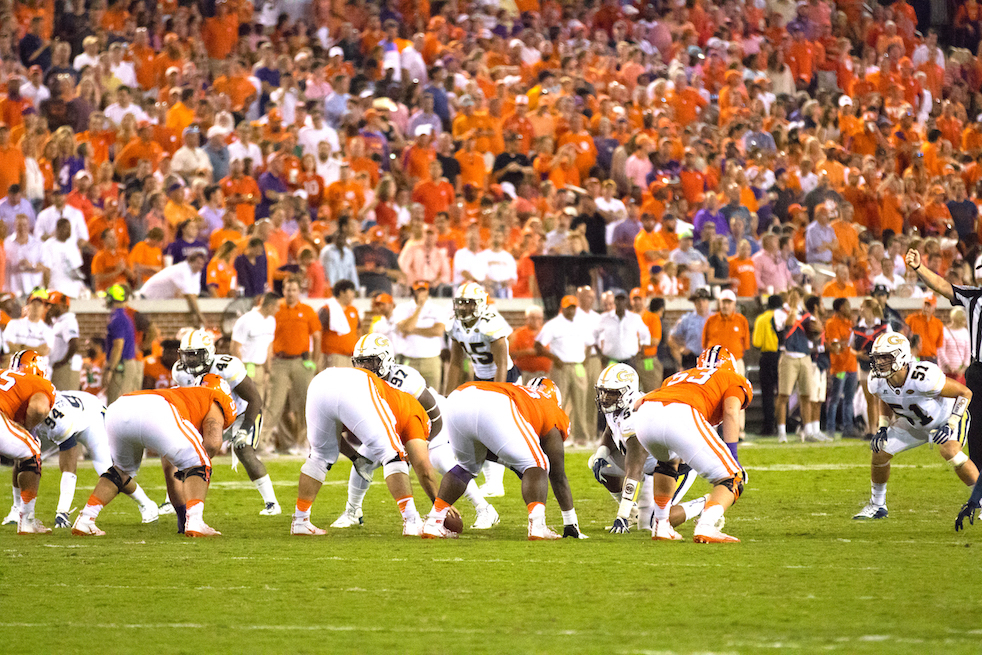
It is often said that football is a game of inches. Hours of intense competition boil down to a single snap, a single penalty, a single playcall. Victory and defeat hang in the balance.
Sometimes these moments are obvious. When Texas’s Vince Young rolled to the right and ran past the first-down marker and into the end zone in the 2006 Rose Bowl, viewers knew at the time that they were watching a historic moment. The plucky Longhorns had defeated a juggernaut USC squad to win a national championship, bringing a title to perhaps the most football-obsessed state in the nation (sorry, Wisconsin).
I agree with the sentiment. Football is about small moments. But the beauty of those snapshots is that they don’t always seem like moments to celebrate at the time.
Take, for instance, the Jackets’ announcement shortly before their season opener that TaQuon Marshall would be the starter. I remember hearing it in the press box at Mercedes-Benz Stadium and being mildly surprised. After all, Jordan was a more known commodity. He had started a road game against a formidable Virginia Tech team the previous season and led the team to an impressive win, one of its most complete performances of the season. Yes, he was a much different player than Justin Thomas — while Thomas made his name dashing around hapless defenders, Jordan preferred a more direct approach — but certainly the offense could be built around him.
By the game’s end, Marshall had validated the decision that left me quizzical just a few hours before. His record-breaking performance against the Volunteers, albeit in a heartbreaking loss, defined itself by two moments: J.J. Green’s late fumble and the fateful failed two-point conversion in overtime. It was a sign of things to come throughout the rest of the season, as we have seen.
The same goes for his backfield mate, B-back KirVonte Benson. Benson was supposed to be an adequate replacement for the outstanding Dedrick Mills, who was dismissed from the team for his third rules violation since arriving on the Flats a year earlier.
Benson redshirted his freshman year and didn’t record any statistics in 2016. Coach Johnson sang his virtues. I thought it was boilerplate praise. I was wrong. He, too, has burst onto the scene as a bruising back able to provide the one element that Mills could not during his time at Tech: breakaway speed to snap off long runs and demoralizing touchdowns. With Marshall, he is the second of two lethal options the team didn’t have last year.
Many things about Tech football have not changed. Ted Roof’s late-game soft coverage still frustrates fans (see wide receiver screen after wide receiver screen the Hurricanes ran a few weeks ago.) The Jackets still have a standout special teams player in Pressley Harvin III, who has kicked some absolutely beautiful punts in the last few weeks.
But what makes watching college football exciting is the constant change. Players stay at most for four years, so even the most durable and reliable athletes must soon be replaced. In 2017, it looks like the Jackets have made all the right decisions. Those decisions will continue to pay dividends
as this season concludes and the next approaches.









